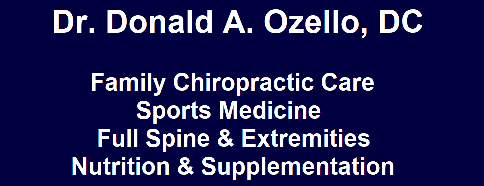Excess Post-Exercise Oxygen Composition (EPOC) is a measure of the bodies increased oxygen consumption after activity or exercise. EPOC is part of the body’s recuperation process to return itself to pre-workout status and the body’s adaption to the exercise. EPOC is part of the process intended to erase the body’s oxygen debt. This physiological process is not entirely understood.
EPOC is nicknamed “the afterburn” because of the increased metabolism and caloric consumption following exercise. After a tough training session the body continues to need oxygen at levels higher than it needed prior to training. The work required to adapt to the workout and restore the body to its pre-training status requires oxygen and energy.
Several of the body’s physiological processes need oxygen following training. Immediately following exercise the body works to re-establish its pre-training heart and breathing rates. In a longer process the body works to re-oxygenate the blood, increase energy storage and restore its temperature. A short term example is heavy breathing after running sprints.
EPOC research results vary. The measurements of level and duration of EPOC differ in research studies. Research shows EPOC duration lasts anywhere between 2 hours to 48 hours.
One established factor is that EPOC is highest immediately after training and slowly lessens over time. Studies indicate duration of EPOC depends on exercise type, intensity and duration of training. Intense training produces a longer EPOC duration than less intense training.
A common research finding is that EPOC occurs with both aerobic and anaerobic exercise. Research results indicate high intensity anaerobic exercise yields a higher EPOC than continuous aerobic training. One study demonstrated that moderate to high intensity cardiovascular training for a long time period produced an EPOC twice as high as a short time period cardiovascular training session.
These results mean that intense anaerobic training and intense cardiovascular workouts produce positive results for the body long after the workout is completed. The physiological afterburn following a hard exercise session will make you healthier and stronger. Develop a routine that forces your body to work during and after training to help reach your fitness goals.
Intense intermittent training and resistance training demonstrate a higher EPOC than continuous exercise in research studies. Several types of workouts will increase your EPOC more than others.
High repetition, moderate to heavy weight, short rest in between sets, and multi-joint exercises are the perfect criteria for workouts that increase EPOC. These principles are imperative when developing your workout routine. An intense set of squats, lunges and kettlebell swings recruit a large number of muscles and elicit heavy breathing when finished. Incorporate this into your training.
Functional kettlebell exercises force the body to work as a synergist unit. High repetition kettlebell swings, cleans, and snatches increase strength and endurance in the musculoskeletal and cardiovascular systems. Develop a functional kettlebell routine that includes high repetitions and short rest periods between sets to increase your EPOC.
Intense barbell and dumbbell training increases EPOC. Multi-joint exercises performed with high repetitions and short rest time between sets increases the afterburn. You will breathe heavily after performing sets of squats, deadlifts and cleans with moderate to heavy weight.
Intensity and basic multi-joint exercises should be the cornerstone to improving your EPOC. Push yourself to train with intensity. Advanced trainees need to work harder than beginners to improve their EPOC.
High-intensity interval training (HIIT) is shown to improve EPOC. HIIT, also called sprint interval training, incorporates a mixture of short bursts of high intensity exercise immediately followed by medium intensity exercise. Perform the intense portion at near maximum effect while the moderate phase is executed at 50 percent of maximum.
HIIT sessions usually last between 15 to 20 minutes. Research studies demonstrate that HIIT increases resting metabolic rate due to increasing EPOC. Utilize this type of training to increase your EPOC.
Intense cardiovascular training is effective in increasing EPOC. Research shows that longer duration cardiovascular training increases the duration of EPOC. Sixty minutes duration generates about twice the EPOC as both twenty and forty minutes of training. Cardiovascular training at levels between fifty and seventy percent of Vo2 max yield the best results.
Develop training routines that increase your EPOC. Include HIIT, intense prolonged cardiovascular exercise and resistance workout with high reps and short rest periods between sets. Utilize these techniques to increase the afterburn and improve your fitness.
Dr Donald A Ozello DC of Championship Chiropractic in Las Vegas, NV
Web Site: http://www.championshipchiropractic.com/
Blog: https://www.championshipchiropractic.com/wordpress/
YouTube: https://www.youtube.com/user/drdozellodc/videos
Twitter: https://twitter.com/drdozellodc
Facebook: https://www.facebook.com/Championship-Chiropractic-280141628688300/
LinkedIn: https://www.linkedin.com/in/dr-donald-a-ozello-dc-716b3233
“Running: Maximize Performance & Minimize Injuries” https://www.amazon.com/Running-Performance-Chiropractors-Minimizing-Potential/dp/1493618741
**Disclaimer: Always consult a medical professional before beginning an exercise program. Always work within your capabilities. Never perform an exercise that elicits or increases pain or symptoms. Reading this article and viewing the linked videos does not take the place of seeing a medical professional. Please visit a medical professional for evaluation, diagnosis & treatment.

